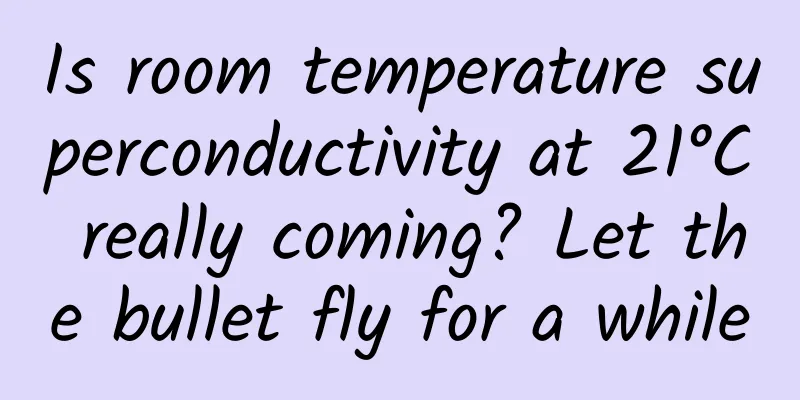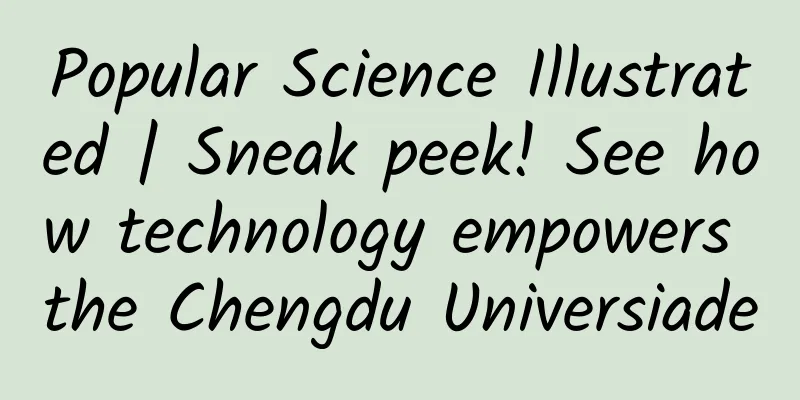Is room temperature superconductivity at 21°C really coming? Let the bullet fly for a while

|
Question, March 8, 2023 What day is it? Answer: Women’s Day Then what? Then…… Then this day is also a day in the March meeting of the American Physical Society. Don't underestimate this day. It seems to be an ordinary day, but something may change the world and change the progress of physics for mankind. The Dias team at the University of Rochester announced that they have discovered a near-normal-pressure room-temperature superconductor , a ternary phase composed of three elements: hydrogen, nitrogen, and lutetium . The research team believes that it can achieve room-temperature superconductivity of about 294K (about 21°C) at about 10kbar (1GPa, equivalent to about 10,000 atmospheres). Superconductor | Image from wiki At this point, someone will ask, what is superconductivity, and why are we so excited about the discovery of room-temperature superconductivity? 01 Superconductivity and its application value The superconducting state is a special state of the material. In the superconducting state, the material is in a state of zero resistance . The physics in the second grade of junior high school tells us that resistance is a common property of materials. When current flows through the material, its internal lattice, impurities, etc. will hinder the movement of carriers. The energy carried by the carriers themselves will be transferred to the lattice, causing Joule heat on a macro scale, and the electric potential will decrease accordingly. Superconductors without resistance do not have the above problems at all. When electric current flows through a superconductor, there is neither heat nor voltage drop, so the current can flow in the superconductor without attenuation. Obviously, the significance of superconductors is obvious. If our wires are all made of superconductors, there will be no energy attenuation . The ultra-high voltage transmission technology we use at this stage is actually to increase the voltage of the transmission line to minimize energy loss. If superconducting wires are used, this problem will not exist at all, which will completely rewrite the entire industry. We can directly transmit electricity at the mains voltage, without the need for a substation, and we may be able to use direct current directly. Our UHV transmission lines may change with the emergence of superconductors | Copyright image, no permission to reprint However, due to the limitation of superconductivity Tc (superconducting transition temperature, which refers to the temperature at which a superconductor enters a superconducting state from a normal state), this idea is completely unattainable. Most of the superconductors we have discovered now have Tc below 77K (-196℃), which is the boiling point of liquid nitrogen. Superconductors with Tc below this level are mostly refrigerated with more expensive liquid helium to enter the superconducting state. Only a small number of copper-based superconductors have Tc above 77K, which can be refrigerated with liquid nitrogen to enter the superconducting state. Even so, superconductors have already been used in our daily lives. Nuclear magnetic resonance imaging in hospitals uses superconductors , which involves another major application direction of superconductors, namely generating large magnetic fields. This thing has a superconductor inside | Copyright image, no permission to reprint When we need a large magnetic field, what do we think of first? Magnets? No, no, no, the magnetic field of a permanent magnet is far from what we need. Let’s think back to the physics knowledge we learned in the second grade of junior high school. That’s right, a solenoid with electricity !! We can also get a magnetic field by using electric current. What’s more exciting is that the magnetic induction intensity is proportional to the current intensity , that is, the greater the current, the stronger the magnetic field . However, large currents will encounter the two problems mentioned above, Joule heating and voltage drop . Large currents will generate heat. What is even more desperate is that Joule heating is proportional to the square of the current . Therefore, for every increase in current, the magnetic field will increase accordingly, but the heat generation will increase by the square, and ultimately most of the energy will be converted into internal energy. High-temperature superconductors discovered so far | Image from wiki The source of Joule heat is resistance. As long as there is no resistance, the influence of Joule heat can be completely ignored. Therefore, the significance of superconductors here is obvious. If we use superconductor wires to make coils, we can increase the current intensity in the coil almost without restraint (the magnetic field can also suppress the superconducting state. It should be noted that the magnetic field generated cannot exceed the critical magnetic field of the superconductor) and thus obtain a strong magnetic field . This is the source of the strong magnetism in nuclear magnetic resonance. In addition to the above scenarios, the Josephson junction made of two different superconductors also has important application value. We can use it to make SQUID , which is currently the most accurate magnetic field detection device and also has important applications in superconducting quantum computers . After reading this, you should have a certain understanding of the significance of room-temperature superconductivity. If we can really discover room-temperature superconductivity under normal pressure, it will bring about major changes in the entire human society. Our existing technology may face subversion, and energy problems will be greatly alleviated, which will have great progressive significance for the entire human race. Let us briefly introduce the discovery process of superconductors and their transport properties, which will help us understand Dias' work. 02 The discovery and mechanism of superconductivity In 1911, Onnes improved the refrigeration equipment and was the first to lower the temperature to below the boiling point of liquid helium. During this period, he discovered that the resistance of mercury suddenly dropped to zero at 4.2K. After repeated confirmation, he finally determined that this was not an experimental mistake or error, but an intrinsic property of mercury. From this, he opened the door to superconductivity. Mercury is also the first superconductor we discovered, with a Tc of 4.2K. In fact, many materials have superconductivity | Image from wiki Onnes measured only the electrical resistance of mercury, which revealed the characteristic of superconductors in electrical transport, namely zero resistance . Onnes (first from right) | Image from Wiki Later, in 1933, when Meissner was measuring the magnetic field distribution of tin or lead metal balls that entered the superconducting state, he discovered that when the material entered the superconducting state, the magnetic field inside it would be rapidly expelled from the body , and the magnetic field only existed outside the superconductor. The superconductor exhibited complete anti-magnetism . This is the Meissner effect . Later studies found that superconductors can be further divided into type I superconductors and type II superconductors . Type I superconductors exhibit a complete anti-magnetic effect, with no magnetic field inside. Type II superconductors allow magnetic fields to generate magnetic flux quanta inside superconductors, that is, they allow magnetic fields to partially enter superconductors. The above research on superconductors is more about exploring their properties. In fact, we have also been looking for the internal mechanism of superconductivity and exploring its essence. The first attempt was the London equation , but this theory could not reveal the relationship between penetration depth and external magnetic field. Around 1950, former Soviet scientists Ginzburg and Landau proposed a phenomenological theory to explain superconductivity - the Ginzburg-Landau theory (GL theory). This theory is based on Landau's second-order phase transition theory and uses order parameters to describe superconductors. This theory successfully explains superconductors. The first and second type superconductors mentioned above are determined by the positive and negative values of the interface energy solved by the GL equation. According to GL theory, the transition of a superconductor from a normal state to a superconducting state is a second-order phase transition . Therefore, in theory, we can find a jump, or a peak, at Tc in the measurement of specific heat . This was later confirmed experimentally. Electrical and specific heat properties of an ideal superconductor | Image from wiki By now, you should have discovered that superconductivity articles are very easy to write. Just measure the resistance, the magnetic susceptibility, and if possible, the specific heat. Even if you can't measure the specific heat, it's not a big deal. Once you've done all these, you're done. Finally, I would like to briefly mention that the best theory we currently have to explain superconductivity is the BCS theory . The core of this theory is that when electrons are coupled with the crystal lattice, there is a possibility that electrons attract electrons, so that two electrons will form Cooper pairs . The electrons that form Cooper pairs can be regarded as bosons. At low temperatures, "condensation" occurs, and energy can flow in the condensed Cooper pairs without dissipation, thus realizing a superconducting state. However, the BCS theory cannot explain all superconducting states . Based on the BCS theory, we calculated the McMillan limit , that is, the Tc of superconductors that conform to the BCS theory will not exceed 40K, but in fact many superconductors have broken through this limit, such as copper-based superconductors and iron-based superconductors. Such superconductors are called high-temperature superconductors, which means that compared with previous superconductors below 20 K, their Tc is much higher. I originally wanted to introduce how to obtain high voltage in the experiment, but due to space limitations, I will talk about it again when I have the chance. 03 New room-temperature superconductor With the above preliminary knowledge, let’s take a look at this article that has been published in Nature. Did you see Dias' name? The last one As with most superconductivity papers, Dias' research team measured the samples' electrical transport, magnetic susceptibility, and specific heat . First, the resistance measurement results are shown in the left figure. The resistance measurement results at 10, 16, and 20 kbar (1, 1.6, and 2.0 GPa) are shown. The resistance is reduced to 0 at all three voltages, which is one of the main characteristics of superconductors. It should be noted that Tc is the highest at 1 GPa. The lower the pressure, the higher the Tc, which is an unexpected result. The inset is a picture of the sample and the electrode. The right figure shows the VI curves of the superconducting state and the normal state. This figure is a measurement of magnetic susceptibility . Figure a shows the change of magnetic moment with temperature at 8kbar (0.8GPa) under 60Oe (Oe is the unit of magnetic field strength in the Gaussian system, which can be understood as Gauss, i.e. 1T=10000Oe). It can be clearly seen that its Tc is 277K (4℃). Figure b shows the relationship between magnetic moment and external magnetic field, which also conforms to the characteristics of superconductors . Figure c is the MT curve under different pressures. The Tc here is consistent with that on the resistor, and the transition temperature range is also very small, which is a very good transition. However, it can also be seen in Figure a that the research team has done some processing on the original data. One more thing to mention here is that the measurement of magnetic susceptibility is obviously affected by the sample shape, background and other factors. In theory, superconductors should show complete diamagnetism (i.e. 4πχ=-1), but it is understandable that complete diamagnetism (i.e. 4πχ>-1) is not measured in actual measurements. Of course, there is no reduction in Dias's article. The vertical axis in Figure a is the magnetic moment, not the magnetic susceptibility. Dias also measured the specific heat , and the results are shown in the figure above. Here are the measurement results of 10, 10.5, and 20 kbar. It can be seen that the three specific heat curves all show the transition of superconductivity in specific heat. The measurement results of Tc and resistance are slightly different, but completely understandable. This result is reasonable . However, it should be said that the transition of this specific heat is not obvious, especially the 10.5 kbar curve, the peak is not obvious, and the transition of 10 kbar is not as obvious as that of 20 kbar. The transitions of these three specific heats also seem to be somewhat different, especially the data of 10 kbar and 10.5 kbar, which only differ by 0.5 kbar, but the image difference is very large. However, considering that it is measured under high pressure, there may be some difficulties that we don’t know about. Dias also gives the XRD (X-ray diffraction) results of the sample and draws a unit cell image, which is of course also necessary. Figure a is the XRD result. They used a Mo target. The red line is the result of theoretical calculation, the circle is the result of actual measurement, and the blue line is the error between the two. It can be seen that the difference between the measurement and calculation results is very small. The sample can be said to be a pure phase. The Dias team calculated that the sample accounted for 92.25%, and the impurities were LuN1−δHε and Lu2O3. Figure b is the unit cell diagram they drew. The white atoms are hydrogen, the green ones are lutetium, and the pink ones are nitrogen atoms. The chemical formula of the sample they gave is LuH3−δNε. The space groups at 61 kbar are Fm-3m and Immm, but Dias believes that the superconducting phase space group is the former. Finally, here is the superconducting phase diagram of the sample (this is the first picture in the original text). Tc decreases with increasing pressure, which is beyond everyone's expectations and may become the focus of research in the future. Figure b shows the change of sample morphology with pressure. It is blue under normal pressure, gradually turns pink as the pressure increases, and finally turns red. The color of the sample is still very festive. Due to limited space, I will not take you through the supporting materials. Interested students can visit the Nature official website: Evidence of near-ambient superconductivity in a N-doped lutetium hydride | Nature Judging from the article, this work is undoubtedly groundbreaking, and the relevant evidence is also sufficient. If it can be repeated, it may be awarded a Nobel Prize in the future. However , physics research is not a one-sided opinion after all. Any scientific research should be able to withstand verification , and this is no exception. This work must be repeated by various research groups in the industry. If the correctness of the result is confirmed after multiple repetitions, it will be epoch-making work. We will have confidence in predicting the Nobel Prize this year. This work is claimed to be room-temperature superconductivity in a near-environment. From the above, you can see that the pressure at the highest point of Tc is 1Gpa, which is about 10,000 atmospheres. Although it is still very large, it is much smaller than the previous 2.7 million atmospheres. The difficulty of repetition is also much smaller . I believe that many research groups have begun to repeat the experiment. However, many people are currently taking a wait-and-see attitude towards this result . On the one hand, it is because the results of the repeated experiments have not yet come out, and on the other hand, it may be because of Dias’ previous “criminal record”. In fact, before this, Dias had already made two breakthroughs: one was metallic hydrogen, and the other was room-temperature superconductivity. Dias first claimed that he had synthesized metallic hydrogen under high pressure, and published a related article in Science, but other research groups did not replicate it. He later claimed that due to improper storage, the pressure of the device storing metallic hydrogen leaked, and the metallic hydrogen eventually evaporated and disappeared due to insufficient pressure. Later, Dias did not synthesize metallic hydrogen again. As a result, metallic hydrogen can be said to have become an "unsolved case." The last room-temperature superconductor of hydride was also synthesized by Dias, and the pressure achieved was as high as 270GPa. The relevant results were published in Nature, but subsequent research groups tried to repeat the experiment but failed. Because Dias did not disclose the original data, many people believed that he used the wrong method in the data processing of magnetic susceptibility and obtained an incorrect conclusion. Therefore, under everyone's unanimous protest, the article was eventually withdrawn from Nature. Of course, all members of Dias' research team protested against the withdrawal, but it was ultimately unrecoverable. Because of these two incidents, many scientists in the field actually distrust the Dias research team. After all, their data results are always much better than others. But this time Dias provided a lot of original data, which can be said to be comprehensive and rich. Moreover, this result only requires a pressure of 1GPa, which is relatively simple to repeat. I believe we will soon be able to give a conclusion on this result. Let us wait and see. Author: Mu Zi Source: Institute of Physics, Chinese Academy of Sciences Reference: Luo Huiqian, "Superconductivity "Little Era": The Past, Present and Future of Superconductivity", Tsinghua University Press, 2022. |
<<: What kind of snow lotus did you buy? Wrong answer, you shouldn't buy any kind of snow lotus
>>: They captured 0.54 seconds of romance!
Recommend
We may have got the tongue's taste map wrong
Eating is human instinct. Especially for foodies ...
5 techniques for event operation and promotion, and coupon distribution!
During the operation of an event, it is sometimes...
The first version of 5G international standards will be completed in June: China takes the lead
The promotion of 5G is in full swing, but don’t f...
Why are those medicines that have grown with us gradually disappearing?
Recently, the State Drug Administration issued th...
How about Aconite SEO training?
SEO Strategy [6 lessons] Features of this section...
Popular Science | Answers to common questions about orthokeratology lenses
Recently, many parents and friends have come to o...
The embarrassment behind the prosperity of domestic mobile phones due to the lack of core technology
In recent years, Chinese mobile phone manufacture...
Introduction to Bidding Ads and Access Industries at Station B
Introduction to B station advertising Bilibili ad...
How to do information flow advertising? Highlight the key points
Information flow advertising, as a new breakthrou...
[Chasing Dreams among Stars] Zhang Xuan: Solving the Simulation Problem to Build a "Heart" for Satellites
Your browser does not support the video tag This ...
iTunes cannot verify the server? Try this solution
After the release of iOS 10, many users encounter...
Which type of promotion is more effective: paid promotion, free promotion, or social media promotion?
When farming on the Internet, traffic is like the...
How to plan high-conversion activities in live broadcast rooms?
Today, let’s discuss how to conduct private domai...
Google brings Android Live Captions to Chrome
Live Caption is a feature released with the launc...
For the entire process of online event operation, just read this article!
Event operations play an important role in the op...









